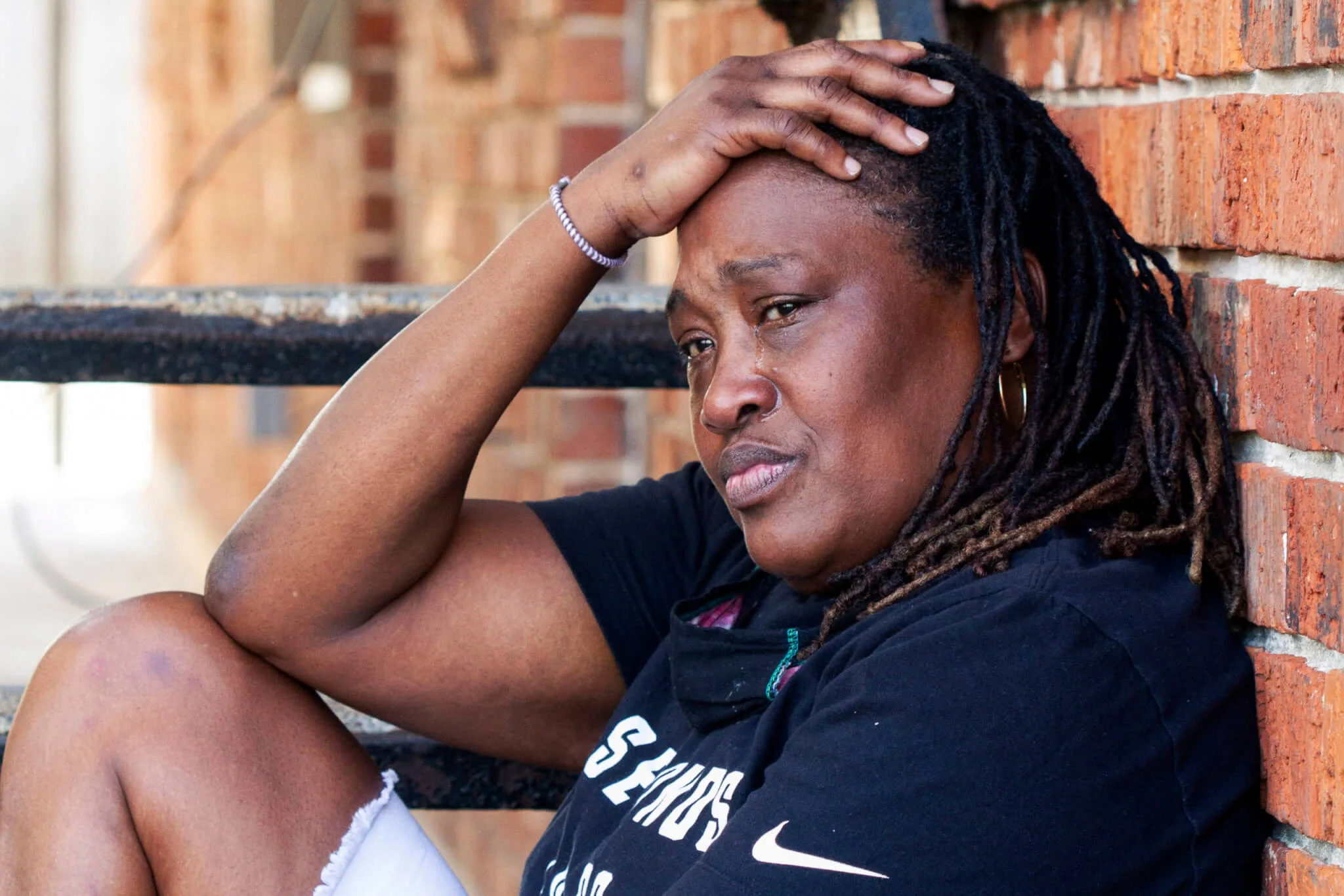
File photo by Dorthy Ray, Associated Press
Arizona’s eviction and foreclosure rates were already double the national average before the COVID-19 pandemic.
Arizona had the highest rate of “housing loss” in the nation, according to a new national study, and that was before what experts called a “tsunami of evictions” that is expected to hit this fall.
The report by New America Foundation looked at evictions and foreclosures by county across the country and found Arizona was first for overall housing loss and second for evictions from 2014-2016. The state was third for foreclosures from 2014-2018.
Displaced in America also included an in-depth look at Maricopa County, which experienced a “total housing loss” rate of 4.5% from 2014-2018, more than double the national average during the period. The trends behind those numbers do not bode well for this fall, experts said, when economic problems from the COVID-19 pandemic are likely to lead to more housing losses.
“From looking at the past these patterns that we saw in this report some of the drivers of housing loss really are amplified by the current pandemic,” said Patricia Solis, an Arizona State University geography professor and executive director of the Knowledge Exchange for Resilience, which partnered with New America.
Long-Term Solutions
The looming crisis prompted Presumptive Democratic Presidential nominee Joe Biden to speak out earlier this month, urging Congress to take action to prevent widespread housing instability. In a Medium post, he laid out his plans to stymie the oncoming surge of evictions and explained how President Donald Trump’s agenda made the crisis worse.
“Over the next two months, with no federal eviction moratorium in place, as many as 20 million families could find themselves out in the street without a safe place to live,” Biden wrote. “Because Donald Trump is abdicating his responsibility to lead us out of the pandemic crisis and the economic crisis, we now face a potential housing crisis across the country.”
In Biden’s plan, an emergency housing support program would be formed, which would offer broad relief to renters across the country. It would also include an extension of unemployment benefits and nutrition programs. Funding would also be provided to cover the cost of health insurance for unemployed workers whose coverage was tied to their employment.
Under the Trump Administration, protections for renters during the pandemic were only made available to those living in federally-subsidized housing. Arizona’s first programs designed to help with housing stability were announced in March, but a slow rollout of relief has led to thousands of renters waiting months for help.
Stopgap Measures
Job losses from the COVID-19 pandemic led Gov. Doug Ducey to sign an executive order in March putting evictions on hold until July, a moratorium he then extended to Oct. 31. And a federal moratorium that was part of the first coronavirus relief bill was extended through the end of this year by the Centers for Disease Control and Prevention, which cited the risk of spreading COVID-19 if people are kicked out on the street.
But critics note that those policies do not include rent forgiveness, meaning many of the people who have lost income due to the pandemic will still be at risk of eviction once the moratoriums end. Researchers compared it to a dam trying to hold back the looming “tsunami of evictions.”
“This is clearly not a long-term solution toward what is a very challenging problem,” said Tempe Mayor Corey Woods, who was on the call for the release of the report.
The study said Maricopa County saw an average of 47,000 housing displacements per year from 2014 to 2018 and pointed to three main causes for the high rate of losses: low wages, lack of affordable housing, and a high population on fixed incomes.
The study found that while Black and Latino households were more likely to experience housing insecurity, there was an even stronger correlation between lack of citizenship and housing loss.
“Language barriers, predatory rental practices, and a reluctance to engage with the government could all be contributing to this dynamic,” the report said.
Maryvale and Westridge Park saw the highest eviction rates in the Phoenix area, with as many as one in three households getting evicted each year.
Being Proactive
New America’s recommendations to address the problem include expanding affordable housing options, improving tenants’ rights, and getting the state to work proactively to prevent housing loss. Solis said that while the moratorium helps in the short term, it has effectively just pushed the problem down the road.
“We need to start thinking about what we’re going to put in place to ever really recover,” Solis said. “As a community, we do not want to deal with the other end of this tsunami.”
Woods said the moratoriums help, for now, but that there needs to be a focus on finding solutions to the root causes of housing insecurity in Arizona.
“Evictions are a symptom of a bigger situation and bigger issues,” he said.
Jessica Swarner contributed to this report.
Continue Reading: Coronavirus Is Exposing Why the Affordable Housing Crisis Is Also a Healthcare Crisis
Politics

State Official: 1864 abortion ban gives Arizona ‘black eye’
Arizona’s role at the forefront of the climate crisis, defending democratic elections, and protecting reproductive rights has caught the attention...

Biden makes 4 million more workers eligible for overtime pay
The Biden administration announced a new rule Tuesday to expand overtime pay for around 4 million lower-paid salaried employees nationwide. The...
Local News

Arizona’s reality TV stars: Where are they now?
From A-list actresses to a controversial bachelor, here's a roundup of reality TV stars from Arizona. Whether you love it or hate it, reality TV is...

New funding keeps the homeownership dream alive for Avondale families
In a unanimous decision, the Maricopa County Board of Supervisors approved an additional $796,326 on March 27 to boost homeownership opportunities...




